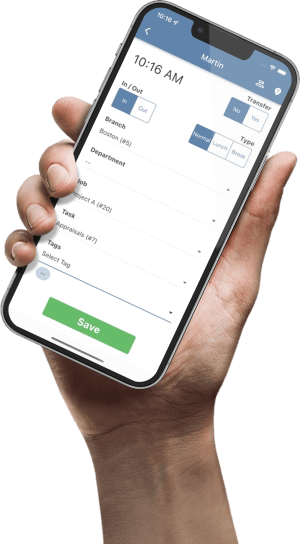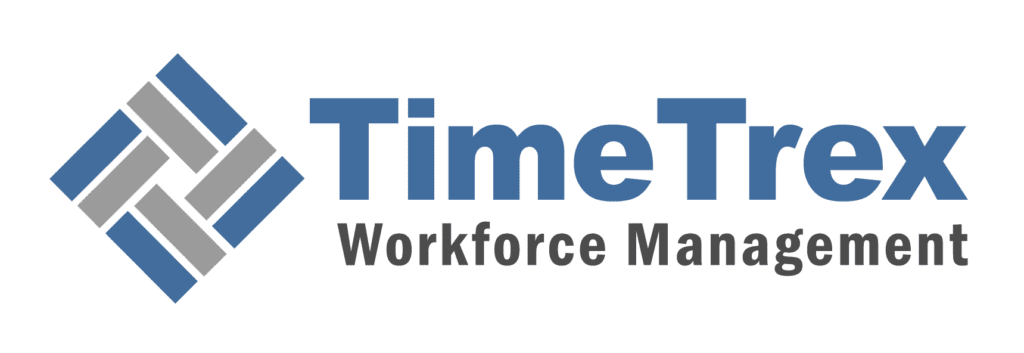
Workforce Management in 2025
TL;DR
In 2025, Workforce Management (WFM) is no longer just for timekeeping; it's a strategic platform essential for business success. Driven by AI, mobile technology, and a focus on employee experience, modern WFM software like TimeTrex optimizes labor costs, enhances productivity, and improves retention. Key features include AI-powered scheduling and forecasting, mobile apps with geofencing for accountability, and employee self-service portals that give staff more control. For new businesses, investing in an integrated, all-in-one WFM platform is crucial for building a resilient, efficient, and engaged workforce from the ground up.
Article Index
- Introduction: Redefining Workforce Management in the Modern Enterprise
- The New Intelligence: AI and Predictive Analytics in Workforce Optimization
- The Mobile-First Mandate: Empowering the Deskless Workforce
- The Employee Experience Imperative: Fostering Engagement and Wellness
- The All-in-One Platform: Integration, Automation, and a Single Source of Truth
- Strategic Analysis: TimeTrex's Market Positioning and Feature Tiers
- Conclusion: Key Takeaways and Recommendations for Decision-Makers
Introduction: Redefining Workforce Management in the Modern Enterprise
The Strategic Shift from Administrative Tool to Integrated Platform
Workforce Management (WFM) software has undergone a profound transformation, evolving from a back-office utility for administrative timekeeping into a strategic, integrated platform essential for organizational success. Historically, managing a workforce involved disparate processes, often handled with spreadsheets or basic time recording software. Today, this fragmented approach is no longer tenable. Modern WFM is an institutional process designed to maximize performance levels by holistically managing all activities required to maintain a productive workforce. It is a complete suite of tools engineered to ensure that the right employees, equipped with the right skills, are in the right place at the right time for maximum productivity and cost-efficiency.
This evolution is driven by the recognition that an organization's workforce is its most valuable and often most expensive asset. Consequently, optimizing this asset is a primary driver of profitability. Modern WFM platforms have become the central nervous system for coordinating how organizations deploy, support, and track their teams. A critical aspect of this strategic shift is the expanding definition of the "workforce" itself. The contemporary labor market is characterized by a dynamic mix of full-time employees, part-time staff, temporary workers, and independent contractors. The rise of the gig economy and an increased reliance on a contingent workforce demand a more agile approach to talent management.
The Core Pillars of Modern WFM
A comprehensive, modern WFM solution is built upon several interconnected pillars that form a cohesive ecosystem for managing human capital. The most effective platforms integrate the following core functions to create a single source of truth for all workforce data:
- Time & Attendance: The foundational component, automating the capture of employee work hours through web-based timesheets, mobile apps, and biometric time clocks to ensure accurate payroll.
- Scheduling & Labor Forecasting: The strategic heart of WFM, using data to forecast labor needs and align staffing to meet demand, avoiding costly overstaffing or service-degrading understaffing.
- Absence & Leave Management: Systematically tracking all employee absences, from planned vacations to FMLA leave, to ensure managers have clear visibility into operational coverage.
- Payroll Integration: Seamlessly integrating time and attendance data with the payroll system to eliminate manual data entry and reduce the risk of human error.
- Human Resources Management (HRM): Centralizing employee information, from records and document management to benefits administration and performance reviews, streamlining the entire employee lifecycle.
Key Drivers of Innovation in 2025
The rapid evolution of WFM software is a direct response to a confluence of powerful economic, social, and technological trends. As businesses look toward 2025, several key drivers are forcing innovation:
First, the normalization of remote and hybrid work models has made traditional, on-premise management tools obsolete. Second, rising labor costs and persistent inflation are intensifying the need for cost optimization. Third, in a tight labor market, employee retention and well-being have become paramount concerns, leading to WFM features that offer greater scheduling flexibility. Finally, the digitization of frontline operations is a major transformative trend, making WFM software the digital hub that connects deskless employees to the broader organization.
The New Intelligence: AI and Predictive Analytics in Workforce Optimization
The most significant technological leap in modern workforce management is the integration of artificial intelligence (AI) and predictive analytics. These technologies are transforming core WFM functions from reactive, data-recording processes into proactive, intelligent decision-support systems. By harnessing the power of data, AI-driven WFM platforms can anticipate challenges, optimize resource allocation, and provide insights that were previously unattainable.
Labor Forecasting and Demand Planning
Traditional labor planning often relied on simple historical averages. Modern WFM systems have replaced this with sophisticated predictive modeling. By leveraging machine learning algorithms, these platforms can analyze vast datasets—including historical sales figures, foot traffic, holidays, and even weather patterns—to generate highly accurate forecasts of future staffing needs. This capability allows managers to move from a reactive posture to a proactive one, anticipating spikes and lulls in business activity to plan their labor budgets and schedules accordingly.
AI-Powered Scheduling
Employee scheduling is a notoriously complex puzzle. AI is fundamentally revolutionizing this process. AI-powered scheduling engines automate the creation of optimized schedules that balance competing variables simultaneously. Instead of manually filling shifts, managers can rely on algorithms that automatically generate the most efficient schedule based on forecasted demand and configurable business rules. These systems can identify the "best-fit" employee for an open shift based on criteria like skills, certifications, and even employee preference. This level of automation not only saves countless administrative hours but also produces schedules that are more efficient, compliant, and equitable.
TimeTrex in Focus: AI-Powered Shift Management
TimeTrex provides a compelling case study in the practical application of AI and automation. Its platform is engineered to transform scheduling from a manual, chaotic function into a streamlined, strategic operation. A core feature of the TimeTrex scheduling module is its ability to automate the generation of complex, multi-week rotating schedules, completely eliminating the need for managers to build them manually. The system's AI-powered capabilities create optimized schedules by considering a multitude of factors, including business demand, employee availability, and specific skill sets. Underpinning this intelligence is a highly flexible, rule-based engine that allows administrators to configure the system to enforce business policies, union agreements, and complex labor laws, ensuring compliance is embedded directly into the automated scheduling process.
The Mobile-First Mandate: Empowering the Deskless Workforce
For organizations with a significant number of frontline or field-based employees, mobile accessibility is a fundamental requirement for any effective WFM solution. The proliferation of smartphones has created an expectation among employees for on-demand, fingertip access to information. For the deskless workforce, the mobile app is often the primary interface with the company's HR and operational systems.
The Rise of the WFM Mobile App
Modern WFM mobile apps serve as a centralized hub for a wide range of employee-centric tasks. These apps empower employees by providing real-time access to their work schedules, allowing them to clock in and out remotely, view their timesheets, and request leave. This level of self-service gives employees a greater sense of autonomy and control over their work lives, which is a powerful driver of job satisfaction and retention.
Geolocation and Geofencing: The New Frontier of Accountability and Safety
Among the most impactful new features enabled by mobile technology are those leveraging the Global Positioning System (GPS). Geolocation and geofencing are transforming how organizations manage their mobile and field-based workforces.
- GPS Tracking: Captures and verifies an employee's geographic coordinates at the moment of a time punch, creating an indisputable record of presence at a specific location.
- Geofencing: Creates virtual perimeters around job sites, allowing the system to enforce rules like preventing off-site punching. This is a powerful tool for eliminating "buddy punching" and other forms of time theft, which cost businesses billions annually.
However, the value of geofencing extends beyond cost control to employee safety. For industries with lone workers, a geofence provides a verifiable record that an employee has safely arrived at and departed from a location, which is crucial for incident reporting and lone worker safety protocols.
TimeTrex in Focus: A Comprehensive Mobile Ecosystem
TimeTrex has developed a robust mobile ecosystem that fully embraces the mobile-first mandate. The TimeTrex mobile app, available for iOS and Android, delivers the platform's full suite of employee self-service (ESS) functionalities. A standout feature is its advanced implementation of geofencing. Available in the Corporate and Enterprise editions, the GEO Fencing feature allows managers to create precise virtual boundaries around job sites. By restricting punches to within these predefined zones, TimeTrex provides a powerful mechanism for ensuring employees are physically present at their designated work locations when they clock in, enhancing both fraud prevention and operational oversight.
The Employee Experience Imperative: Fostering Engagement and Wellness
In the competitive landscape of 2025, the employee experience has moved from a peripheral HR concern to a central business imperative. Organizations recognize that a positive work environment, characterized by flexibility and autonomy, is essential for reducing burnout and turnover. Modern WFM software is playing a pivotal role in this shift.
The Centrality of the Employee Self-Service (ESS) Portal
The Employee Self-Service (ESS) portal has become the digital cornerstone of the modern employee experience. These portals empower employees by giving them direct control over tasks like updating personal information, viewing schedules, accessing pay stubs, and checking PTO balances. This autonomy is a significant driver of job satisfaction. Beyond convenience, the transparency created by ESS portals is a powerful driver of trust. By providing direct, real-time access to data, the WFM system becomes a single source of objective truth, fostering a sense of fairness and psychological safety.
Flexible Scheduling and Burnout Prevention
A rigid, top-down approach to scheduling is a significant contributor to employee stress. WFM platforms are addressing this with features that transform scheduling into a more collaborative process. Features like self-service shift swapping and the ability to view and claim open shifts give employees a crucial sense of control over their work lives, which is a key factor in mitigating burnout and improving retention.
TimeTrex in Focus: Building an Employee-Centric Platform
TimeTrex has integrated a suite of features specifically designed to enhance the employee experience. The platform's ESS portal is comprehensive, providing employees with 24/7 access to their critical work-related information from any device. To further promote flexibility, TimeTrex offers seamless calendar integration, allowing employees to sync their work schedules with personal calendars like Google Calendar and Outlook. Uniquely, TimeTrex includes tools for proactive engagement, such as a module for automated employee incentives and a suite of performance management tools that facilitate continuous feedback and skills assessments.
The All-in-One Platform: Integration, Automation, and a Single Source of Truth
As workforce management becomes more complex, the limitations of siloed software solutions are apparent. The modern enterprise requires a unified approach, which has led to the rise of the all-in-one WFM platform.
The Power of Integrated Systems
The core value of an all-in-one platform is the creation of a "single source of truth." By tightly integrating modules for Time & Attendance, Scheduling, Payroll, and HR into a single database, these systems eliminate data silos. Most significantly, it eradicates the need for manual data entry between systems—a process that is not only time-consuming but also a primary source of costly errors. This level of automation dramatically reduces administrative burdens and ensures a much higher degree of payroll accuracy.
The User Experience as a Core Feature
In today's software market, functionality alone is not enough. The user experience (UX) and user interface (UI) have become critical features. A clean, modern, and intuitive UI is essential for driving user adoption. A system that is difficult to navigate will lead to user frustration and a failure to realize the platform's full ROI. The experience of using the software is now a primary battleground in the WFM market.
TimeTrex in Focus: A Unified Architecture and Modern UI
TimeTrex's platform architecture exemplifies the principles of integration and user-centric design. The system is built as an all-in-one solution, ensuring data flows seamlessly across the platform. Recognizing the importance of UX, TimeTrex undertook a major overhaul of its user interface. The "New Modern UI" update, which began rolling out in August 2025, replaced an outdated system with a clean, responsive, and mobile-friendly design built on modern HTML5 technology. Key enhancements include streamlined navigation, quick-action buttons, and an intuitive drag-and-drop scheduler, demonstrating TimeTrex's commitment to improving usability.
Strategic Analysis: TimeTrex's Market Positioning and Feature Tiers
TimeTrex provides a tiered structure that allows businesses to scale their capabilities as their needs evolve, coupled with a unique dual-deployment strategy that offers unparalleled flexibility.
Feature Breakdown by Edition
TimeTrex structures its commercial offerings into three distinct editions: Professional, Corporate, and Enterprise. This tiered approach enables businesses to select a package that aligns with their current needs and budget.
| Feature | Professional Edition | Corporate Edition | Enterprise Edition |
|---|---|---|---|
| Core WFM Suite | |||
| Time & Attendance Tracking | ✓ | ✓ | ✓ |
| Comprehensive Payroll Solutions | ✓ | ✓ | ✓ |
| Efficient Employee Scheduling | ✓ | ✓ | ✓ |
| Holistic HR Management | ✓ | ✓ | ✓ |
| Leave & Absence Management | ✓ | ✓ | ✓ |
| Mobile App & Employee Self-Service | ✓ | ✓ | ✓ |
| Advanced Operations & Finance | |||
| Detailed Job Costing | ✓ | ✓ | |
| GEO Fencing for Location Management | ✓ | ✓ | |
| Document Storage & Management | ✓ | ✓ | |
| Invoicing & Accounts Receivable | ✓ | ✓ | |
| Strategic Talent Management | |||
| Expense Management & Tracking | ✓ | ||
| Recruitment & Onboarding Management | ✓ | ||
| Advanced Applicant Tracking System | ✓ |
Deployment Models: Cloud vs. Open-Source On-Site
One of TimeTrex's most significant market differentiators is its flexible deployment strategy.
- Cloud Hosted: The standard Software-as-a-Service (SaaS) model, ideal for most businesses. TimeTrex handles all upgrades, maintenance, and backups, offering a swift setup and lower upfront IT overhead.
- On-Site (Open-Source): This option is a powerful differentiator. By providing full access to the platform's source code, this model offers unparalleled flexibility and control. Businesses can customize every aspect of the software and maintain complete control over their sensitive employee data.
Conclusion: Key Takeaways and Recommendations for Decision-Makers
The workforce management landscape is in a period of rapid evolution. The pressures of a dynamic labor market, rising operational costs, and the employee experience imperative are driving a new generation of WFM platforms that are more intelligent, mobile, and integrated than ever before.
Synthesizing the Most Critical WFM Features for 2025
This analysis reveals three defining characteristics of next-generation WFM software that should be at the forefront of any evaluation process:
- Intelligence: The integration of AI for labor forecasting and automated scheduling provides a distinct competitive advantage.
- Mobility: A robust, intuitive mobile application is non-negotiable. Features like GPS tracking and geofencing are becoming standard.
- Employee Experience: Features that promote a positive experience—such as comprehensive self-service portals and flexible scheduling—are critical for attracting and retaining talent.
Final Assessment of the TimeTrex Platform
TimeTrex emerges as a highly capable and strategically positioned player in the WFM market. Its primary strength lies in its comprehensive, all-in-one architecture. The platform's commitment to innovation is evident in its adoption of key modern features, including its AI-powered scheduling engine, advanced mobile capabilities, and a robust employee self-service portal. However, TimeTrex's most unique strategic advantage is its dual-deployment model, offering both a conventional Cloud Hosted solution and a highly customizable On-Site open-source option. This makes it an exceptionally compelling choice for organizations with unique operational needs or stringent security requirements.
Recommendations for Evaluating WFM Software
For decision-makers tasked with selecting a WFM solution, the following recommendations can guide a more effective evaluation process:
- Prioritize Integration: Vigorously assess a platform's ability to serve as a single source of truth. Favor all-in-one solutions that eliminate data silos.
- Focus on the Employee Experience: Evaluate the mobile app and ESS portal from an end-user's perspective. A system that employees find difficult to use will fail to deliver on its promise.
- Align Features with Specific Pain Points: Conduct a thorough internal needs analysis and map your primary challenges to specific software features designed to solve them.
- Consider Total Cost of Ownership (TCO): Look beyond the initial subscription fee. Factor in implementation fees, charges for add-ons, and internal IT resources required for management.
Ready to Transform Your Workforce Management?
Discover how TimeTrex's all-in-one Workforce Management platform can help your business reduce costs, improve productivity, and build a more engaged team. Explore our powerful features and see why businesses are choosing TimeTrex to navigate the future of work.
Learn More About TimeTrex WFMDisclaimer: The content provided on this webpage is for informational purposes only and is not intended to be a substitute for professional advice. While we strive to ensure the accuracy and timeliness of the information presented here, the details may change over time or vary in different jurisdictions. Therefore, we do not guarantee the completeness, reliability, or absolute accuracy of this information. The information on this page should not be used as a basis for making legal, financial, or any other key decisions. We strongly advise consulting with a qualified professional or expert in the relevant field for specific advice, guidance, or services. By using this webpage, you acknowledge that the information is offered “as is” and that we are not liable for any errors, omissions, or inaccuracies in the content, nor for any actions taken based on the information provided. We shall not be held liable for any direct, indirect, incidental, consequential, or punitive damages arising out of your access to, use of, or reliance on any content on this page.
About The Author

Roger Wood
With a Baccalaureate of Science and advanced studies in business, Roger has successfully managed businesses across five continents. His extensive global experience and strategic insights contribute significantly to the success of TimeTrex. His expertise and dedication ensure we deliver top-notch solutions to our clients around the world.
Time To Clock-In
Start your 30-day free trial!
Experience the Ultimate Workforce Solution and Revolutionize Your Business Today
- Eliminate Errors
- Simple & Easy To Use
- Real-time Reporting

Saving businesses time and money through better workforce management since 2003.
Copyright © 2025 TimeTrex. All Rights Reserved.
